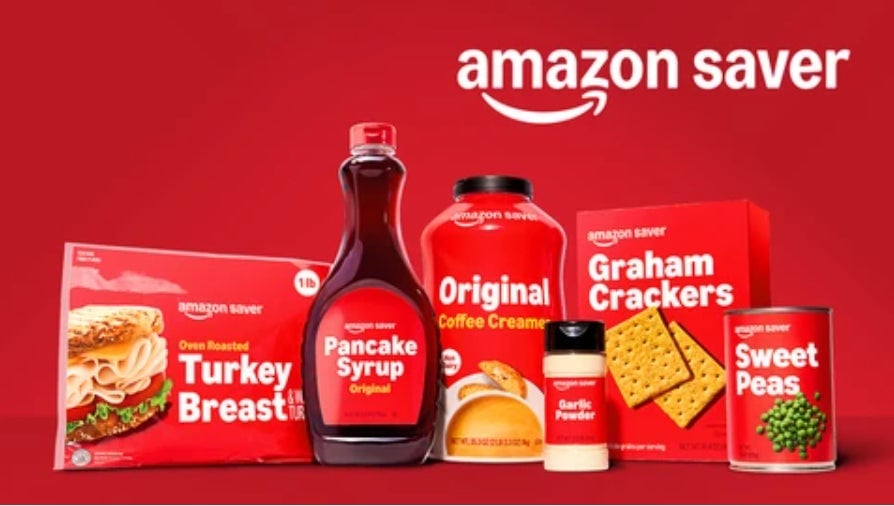Amazon is taking aim at Walmart and Target with cheaper groceries
Amazon Saver will include a variety of everyday essentials such as crackers and cookies, with most items priced under $5

Amazon (AMZN) is setting its sights on Walmart, Target, and Aldi with the launch of a new budget-friendly grocery line aimed at attracting price-conscious shoppers in search of value over splashy brand names.
Suggested Reading
The line, called Amazon Saver, is a “no-frills” private-label brand with items priced under $5. The new line includes essentials like cookies, crackers, smoked ham, and pizza sauce. The brand is set to expand to over 100 products in the coming months.
Related Content
Although Amazon already offers several private-label food brands like Amazon Fresh, Happy Belly, 365, and Aplenty, the new Saver line is positioned to be the most economical option. According to Amazon, Saver is designed to help “customers make the most of their grocery budget.”
Starting Tuesday, Amazon said it will also boost grocery discounts for Prime members, who pay an annual fee of $139. Discounts will apply to over 3,000 items both online and at its 50 Amazon Fresh Stores.
Typically, Prime members receive a 10% discount, but now they can get up to 50% off on eight to 15 rotating grocery items each week, including fresh produce and meats, the company said. Additionally, more than 1,200 rotating grocery items and household brands will be discounted by 25%. Prime members will also receive an extra 10% off items from the Saver line.
Amazon’s latest move may be one way it is looking to keep up with rivals like Walmart (WMT), Target (TGT), and Aldi. All three of these retailers offer their own budget-friendly private-label lines and have become the go-to options for consumers facing high grocery prices.
With ongoing inflation, shoppers have been looking for ways to stretch their dollars further, particularly when it comes to groceries. Even discount retailers like Dollar General (DG) and Dollar Tree have seen a shift in consumer spending.
As one of the largest companies globally, Amazon’s new strategy could boost its presence in the grocery sector, especially as consumers remain focused on value and quality. This trend was evident in July during Amazon’s two-day Prime event, where spending patterns revealed shoppers are cautious, but are willing to spend on essentials.